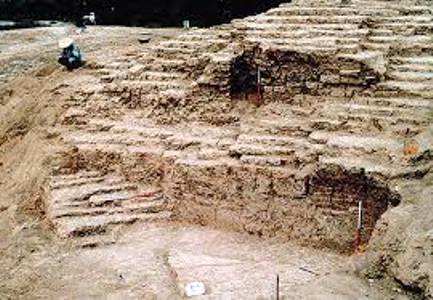
The English-language “Iran Daily” wrote on Wednesday that “Jiroft has undergone different phases of archeological excavations since 2002. Although many valuable objects, including two clay inscriptions carrying the oldest human scripts, have been unearthed during authorized excavations in the region, many more such objects have been found by pillagers and smuggled abroad to become the centerpieces in museums across the world.
Nader Alidad Soleimani, the manager of Jiroft’s Cultural Heritage Site, has been studying the location for
the past 20 years. He has greatly contributed to safeguarding the cultural and historical remains of Jiroft.
Iran Daily conducted an interview with him to get detailed information about the ongoing studies.
Excerpts follow:
IRAN DAILY: Please explain the various phases of excavations that have been conducted in Jiroft.
SOLEIMANI: The first phase of official archeological studies was conducted during 2002-2007. The studies resumed in the region in 2014 after a seven-year pause.
However, I have been exploring the Jiroft region since 1995, since I was aware of the historical importance of Jiroft, years before official studies began.
Currently, the second season of excavations is underway in Esfandagheh Plains in Jiroft. The first season was completed last summer. Valuable architectural items have been unearthed during the first and the second excavation seasons, including evidences of Neolithic settlement and the remnants of ancient buildings in red and yellow colors.
In addition to archeological excavations, the joint three-month research studies were conducted in collaboration with a delegation from German University of Tübingen International and Iranian experts during Feb. 20-May 20, 2015.
The research yielded positive outcomes and raised our knowledge about the historical site.
American archeologists have described Jiroft’s excavations as the largest excavation projects of its kind ever conducted in the Middle East. The importance of Jiroft’s human civilization has been accepted by French, British and Italian experts as well. Many experts also believe that if any important event were to occur in the field of archeology within the next 50 years, it would definitely occur in Jiroft. Please tell us more about the geographic situation of Jiroft and its importance.
**Many think that Jiroft is only a city with identifiable boundaries. This is while, when we talk of Jiroft we mean an extensive cultural field that once thrived along Halilroud river.
The river is situated in the southeast of Iran near Jiroft, Kerman province. The river, which extends for 390 kilometers, runs along the Jiroft and Kahnuj districts. It originates in Hazar mountains, some 3,300 meters above sea level and about 100 kilometers to the northwest of Jiroft, and flows to the southwest.
Many historical hills have been located in this massive area, each providing valuable evidence of the cultural richness of the region.
The region is host to various archeological teams every year.
**Which countries are involved in the archeological excavation project of Jiroft?
The US, France, Italy and, very recently, Germany have so far sent archeological teams to Jiroft. Foreign archeological teams can only work under the supervision of Iranian experts. Their activities are also limited.
**Why are foreign teams needed for excavations?
Today, archeology is regarded as an interdisciplinary field. Ancient Botany and Osteology are among the fields of study that have contributed to the development of global archeology over the past few years.
Such fields of study are not available in Iranian universities. Sometimes, they are available but domestic knowledge about them is poor.
These shortcomings make the need for using the proficiency of foreign archeologists greatly felt.
Foreign experts engaged in excavations help train Iranian students, improve their knowledge, and contribute to the archeological excavations.
**Numerous illegal diggings have taken place in the region in the past, leading to the smuggling of many valuable items. What has the government done to address illegal pillagers or prevent such problems from recurring?
Illegal diggings have damaged Jiroft historical site over the years, leading to the smuggling of a great volume of valuable historical objects, which are now being kept at the world’s prestigious museums.
The Iranian government has taken effective steps for the repatriation of such objects.
Eighteen artifacts, each dating back to 5,000 years were returned home four years ago thanks to former government’s efforts.
The return of historical objects becomes a more complicated if they are owned by unknown private collectors or kept at private museums. Filing lawsuit against private collectors in international courts is a tougher job.
**How much is allocated for archeological projects annually?
An annual $10,000 is allocated by the government for archeological excavations in Jiroft, which is meager given the extensive areas which have to be explored.
An archeological team consists of only six individuals and this is not enough for conducting excavations over such extensive areas.
All the shortages pave the ground for looters, and increase the risk of illegal diggings.
Currently, the digs are refilled on the completion of the projects so that the site and historical objects can be protected. This is while, a historical site, such as Jiroft, can also serve as an open-air museum.
An open-air museum attracts so many visitors and contributes to the development of tourism sector as well.

Add new comment